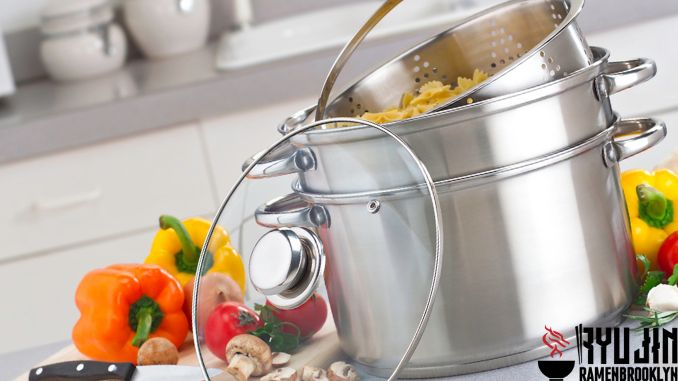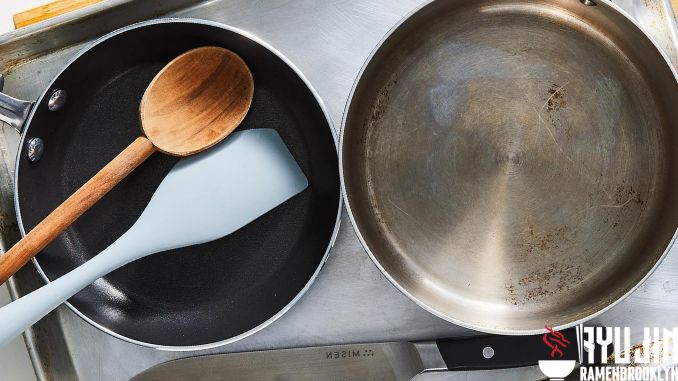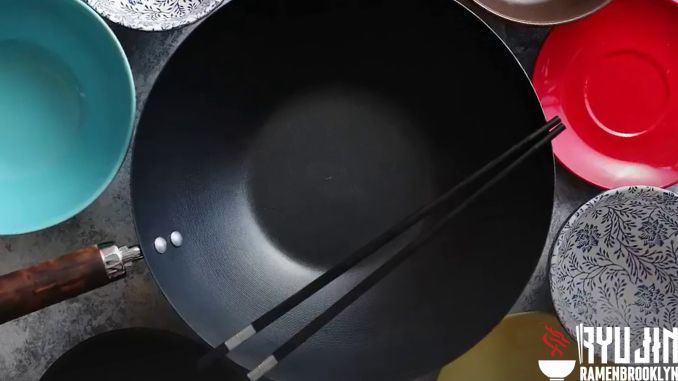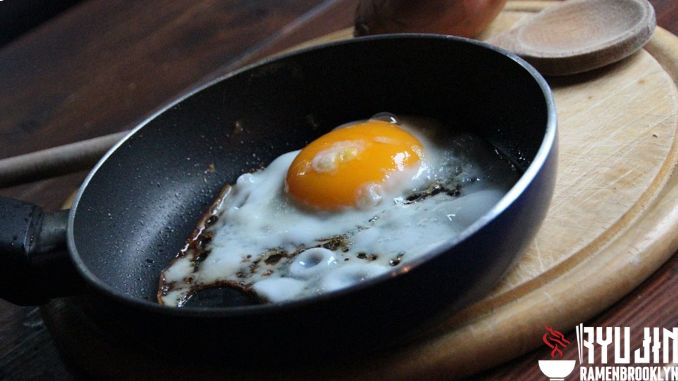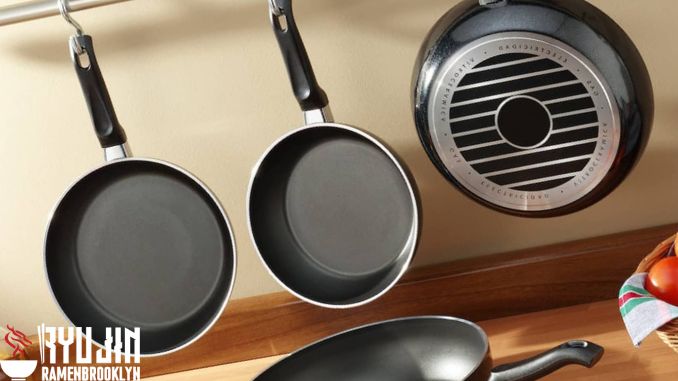Does Anodized Aluminum Wear Off?
Cooking is an important part of any household, and the cookware you use can impact the quality of your food. Cookware is an important part of any kitchen, whether you’re a professional chef or just starting in the kitchen. Different materials offer different benefits, so choosing the right cookware for your needs is important.
When it comes to choosing cookware, there are a lot of factors to consider. From the material to the size and shape, there are many options to be loved by many people. Copper and stainless steel are two of the most common, but anodized aluminum is becoming increasingly popular.
Anodized aluminum is desirable because it doesn’t react with food as copper can and doesn’t rust or tarnish like stainless steel. But does anodized aluminum wear off over time?
In this blog post, we’ll explore what anodized aluminum is and whether or not it wears off over time. We’ll also provide tips on caring for your anodized aluminum cookware. Stay tuned!
See more: How to Clean Discolored Enamel Cookware?
- What Is Anodized Aluminum?
- Does Anodized Aluminum Wear Off?
- What are the Benefits of Anodized Aluminum?
- FAQs
- What is Hard Anodizing?
- Does Anodizing Affect the Strength of the Aluminum?
- How Long Does Anodizing Last?
- What’s the Difference Between Type II and Type III Anodizing?
- How Do You Keep Anodized Aluminum from Fading?
- Does Anodizing Peel Off?
- Can You Anodize Stainless Steel?
- Disadvantages of Using Anodized Aluminum Cookware
- Conclusion
What Is Anodized Aluminum?
Anodizing, a process in which the surface of the raw metal has been passivated to prevent it from oxidizing and turning dark gray or black over time, creates highly durable surfaces with great weathering characteristics.
It’s often used for architectural applications because its protective coatings can withstand extensive foot traffic without scratching away at their delicate designs–and even if they do get damaged by something like paintbrushes going crazy on them (you know how kids are), nothing will happen until you commit suicide upon discovering this unfortunate incident!
The aluminum we use daily is an alloy, meaning it contains other elements mixed into its composition. While this helps make the metal stronger and more durable than pure metals like gold or silver (for example), if not cared for properly over time, your car will start turning dark grey-brown from natural oxidation processes at speeds you never knew existed! Luckily there are plenty of ways to stop these ugly transformations before they get too far.
Unlike stainless steel, it will not sustain any polished surface when exposed to the atmosphere and thus needs frequent cleaning with soap, water, or detergent-based cleaners instead; if left unwatched then, oxides form on its surface that dulls down luster significantly faster than one might expect from just looking at them.
Some people consider this effect “patina” which ranges depending upon where you live whether seaside regions have more protection against corrosion compared to, let’s say, landlocked areas, so they’re able to withstand weathering better but even still -unprotected parts often pit extensively without much trouble right away. At the same time, anodized aluminum does not show any such wear.
The aluminum surface is anodized to reduce the effects of atmospheric corrosion but not eliminate them. Therefore, over time this thin layer will wear away and be replaced with newer material; depending on how thickly applied or high quality it was first applied (a poor application would have more frequent changes), you can expect your drinkware’s lifetime estimate at least 10-20 years before needing another update!
Aluminum is a popular material for cookware because it’s lightweight, durable, and easy to clean. However, the surface can be scratched with just one swipe of your hand due to its softness when compared with other metals that rank harder on the Rockwell Hardness Scales, such as steel or sterling silver.
A layer protector from scratches but not perfectly indestructible – why? Well, many different types of anodized aluminum have unique qualities, which make them better suited for certain tasks than others, so it just depends on what you need!
For example, “hard anodized aluminum” is often used in commercial kitchens because it’s more wear-resistant than other types; this makes sense since their cookware is constantly scrubbed clean with harsh detergents and steel wool pads.
On the other hand, “soft anodized aluminum” is better for at-home use because it’s less likely to chip or peel over time, even with regular wear and tear from cooking family meals every night. No matter what kind you have, both will eventually show some surface scratches after extended periods of use – it’s just a natural part of the metal!
Adding anodized finishes to aluminum surfaces can cause chemical reactions that create colorations or reflect different colors depending on what’s being used for the alloying components.
Color Anodization
What makes aluminum so unique and special? It’s not just because of its many colors. It has several different ways to produce those hues. The dye process uses natural or synthetic dyes in watery base solutions with pigmentary pigments added for coloration; salt deposits give an aged look by sequentially coating various types of metal on top of one another until they’re all covered evenly (like rust) while electrolytic deposition produces more vibrant tones through artificial electric current applied between two electrodes made out slices of polished conductors combined into human-readable words like “hello” which can then be read optically.
This not only provides a more aesthetically pleasing appearance but can also offer better corrosion resistance in some cases due to the added oxide layer created during the process.
It’s important to note that anodized aluminum does not change the actual color of the metal itself but instead creates a coating on top that is tinted to your desired shade. Therefore, the original silver color would be exposed underneath if you scratch off the anodized layer in any spot.
Whether it’s a white, silver, or gold color- aluminum has many different hues that can be seen in its natural state. This is because of the porosity within these metals, which allows salt and electrical currents to alter their surface properties through sweating when heated up by various factors such as heat from friction against other objects or sunlight exposure over time.
Some alloys show more variation than others depending on what else they’re mixed with; if there isn’t enough iron present, then darker shades won’t happen at all. Instead, only lighter ones will mask any original tinting completely.
How is Aluminum Anodized?
To anodize aluminum, you must clean and rinse the surface thoroughly. Next, pour it into a bath of sulfuric acid (or some other type) that has been mixed with electrolytes so they are conducting both directions at once; this ensures there’s no blocking anywhere for the current to flow properly throughout your piece!
Now apply electricity by making one side positively charged. At the same time, another remains negatively charged – these two forces will try their best to attract each other and repel one another. As a result, the positively charged ions will want to travel towards the negative electrode while the negative ions are attracted to the positive electrode; this process creates a circuit that is called an electrolytic reaction.
As the current passes through the solution, it causes a chemical reaction on the surface of your aluminum part, which in turn changes its oxide layer. This newly formed oxide layer is much thicker than the one originally and more resistant to corrosion and wear. The thickness increases because metal atoms from within the aluminum are deposited onto the surface as the oxide layer grows.
Once the desired thickness is reached, the part is removed from the acid bath and rinsed off with water. At this point, the anodizing process is complete, and your aluminum part now has a durable, corrosion-resistant finish! Additionally, it can be dyed to create a wide range of colors, which makes it ideal for use in applications where aesthetics are important.
The anodizing process increases the thickness of the oxide layer, which helps to protect the aluminum from wear and tear. It also gives the metal a durable finish that is less likely to fade or discolor over time. Anodized aluminum is often used in construction, automotive, and marine applications. It is also popular for jewelry, cookware, and other items where a durable finish is desired.
Anodized Aluminum and Corrosion
Anodized aluminum is more corrosion-resistant than natural, unfinished metals. But, some concerns and contaminants can affect anodized aluminum, causing discoloration or fading. This happens from contact with salt water, especially if it has beenChatoyantined for long periods, as well as lime acids found in concrete, etc. Still, masonry materials like brick will cause corrosion when they come into direct physical contact!
Stains on aluminum parts are not only unsightly, but they can also be dangerous. When water is allowed to slowly seep through the surface and dry out little by little over time, dark gray or black stains will develop, which could lead to your part’s durability if left untreated for long periods of times-especially when you’re talking about natural materials like steel that does not respond well with corrosion caused by environmental factors such as humidity in temperature changes, etc.
What causes these staining agents? First, moisture getting trapped within pores between different layers during the production process makes them vulnerable at places where there should ideally never exist any gaps whatsoever -such instance happening right under somebody’s nose while working away might not seem like much. Still, it does affect how anodized aluminum looks!
Microscopic cracks are visible on anodic coatings when they’re examined under magnification. These surface crazes result from differential thermal movement between the thin film of aluminum that protects against corrosion and enhances durability, as well as steel underneath it; this type is not considered detrimental to overall protection because, unlike other types, there’s no risk for progressivity or escalation–it will only get worse if left untreated!
The Solution to Fading and Discoloration
If you are looking for a way to keep your anodized aluminum from fading or discoloring, there are a few things that you can do. First, make sure that you keep it clean. You will need to wash it regularly with soap and water. You may also want to use a mild cleaner specifically designed for aluminum. If you do use a cleaner, be sure to rinse it off completely so that no residue is left behind.
Second, avoid using harsh chemicals or cleaners on your anodized aluminum. These can strip away the protective coating and leave the metal vulnerable to staining and discoloration.
Third, if your anodized aluminum does become stained or discolored, you can try using a product specifically designed to remove these stains. Several products on the market can effectively remove stains from anodized aluminum. If you cannot find a commercial product that works, you can try using a mixture of vinegar and water. Apply this mixture to the stained area with a soft cloth and then rinse it with clean water.
Fourth, if you live in an area with high humidity or temperature fluctuations, you may want to consider storing your anodized aluminum indoors. These extreme conditions can cause the metal to expand and contract, leading to cracking and flaking of the protective coating.
Does Anodized Aluminum Wear Off?
We all know that aluminum is durable, but did you also realize how much it can take on? It turns out anodized cookware isn’t immune to wear and tear. Developing this type of coating creates different types with varying responses when exposed over time – some will eventually be worn away completely, while others may only show signs like scratches or dents in their surface finish due entirely to our usage patterns!
The anodization process creates a hard, durable finish that is resistant to corrosion and wear. However, the finish can become stained or discolored over time. You can extend the life of your anodized aluminum by cleaning it regularly and avoiding harsh chemicals and cleaners.
If the finish does become stained or discolored, you can try using a commercial cleaner or a mixture of vinegar and water to remove the stains. You may also want to store your anodized aluminum indoors if you live in an area with extreme humidity or temperature fluctuations.
The process of anodizing is less expensive to produce and maintain. In addition, the highly abrasion-resistant coatings are durable in high-traffic areas, where they’re subject to physical abuse or abrasive cleaners that can damage other surfaces (like wood). Unfortunately, aluminum isn’t recyclable because it’s too big for recycling facilities. Still, these chemicals don’t emit VOCs, so there will be no major environmental impact as long you use them properly!
What are the Benefits of Anodized Aluminum?
Durability
The durability of anodized aluminum is unmatched in the industry. It offers long-term savings through maintenance and operating cost reduction. In addition, its reactivated finish provides ultimate bonding with your product’s underlying structure for total peace of mind when you need to sell or send them off!
Aesthetic Appeal
Anodizing is the perfect finish for your aluminum parts because it offers many gloss and color alternatives, minimizing or eliminating any variation in appearance. Unlike other finishes, that dull metal’s luster will never change its true-to-form nature!
Anodized aluminum is available in many colors, making it an ideal choice for applications where aesthetics are important. It can also be dyed to create a unique look for your product. In addition, the corrosion resistance anodizing process creates a protective barrier that helps to resist corrosion and wear. This makes it ideal for construction, automotive, and marine applications. Anodized aluminum is also popular for jewelry, cookware, and other items where a durable finish is desired.
Color Stability
The exterior of anodic coatings provides good stability to ultraviolet rays and doesn’t chip or peel, which makes them ideal in situations where durability matters most!
Easy Maintenance
With a simple cleaning routine, anodized surfaces can maintain their original appearance for years to come. Rinsing or mild soap and water is all that’s needed most of the time when restoring these finishes into shape after fabrication work has been done on them. However, if you want your metal looking brand new again, then more aggressive cleaners may be required at times too!
Anodized aluminum does not require any special care or maintenance. Simply wipe it down with a damp cloth to remove any dirt or debris. You should avoid using harsh chemicals or abrasive cleaners as they can damage the protective coating.
Cost
The aluminum industry is a tough market, with many companies competing for your dollars. However, anodized aluminum’s lower initial finishing costs combine to make it one of the best values in this competitive field!
Health and Safety
The anodizing process is a safe way to create durable finishes that are not harmful or dangerous, even at temperatures like 1,221 degrees Fahrenheit ( Countdown Is On!).
Healthy human beings need air pollution control devices such as masks around toxic substances because they can inhale them in places where there isn’t enough ventilation which may cause lung illnesses down the line. However, aluminum’s natural oxide layer is reinforced by this technique – unlike many other metal treatments – so there’s no need for such health and safety precautions to be taken during the anodizing process!
FAQs
What is Hard Anodizing?
Hard anodizing is a type of anodizing that produces a thicker oxide layer than standard anodizing. This thicker oxide layer provides greater wear resistance and corrosion resistance. Hard anodizing is often used in applications where the aluminum will be subject to high levels of wear and tear, such as in automotive and aerospace applications.
Hard anodizing, sometimes called type III for short (“hard-anodized”), offers greater corrosion protection and resistance to wear in extreme environments or with moving mechanical parts subject to a lot of friction.
This is produced by continuing the electrical current until the depth exceeds 10 microns up past 25 mm! That takes more time, but it also ensures you get top quality on your project no matter what–as opposed to low-cost medals like those made from aluminum which will break quickly if they’re used often enough. The increased thickness does make hard anodizing more expensive, but the benefits may be worth the cost in some applications.
See more: Know More about Hard Anodized Cookware
Does Anodizing Affect the Strength of the Aluminum?
There are many myths about aluminum that continue to this day. One common misconception is that anodizing will weaken or change your product’s strength, but it won’t! The process only affects a very small layer on its surface; within nanometers (billionths of a meter).
This doesn’t affect anything else inside, so you can rest assured knowing whatever properties were originally put into production by shaping and treating before getting “anodized,” remain constant even after undergoing such treatment like coating with aluminum oxide.
The other thing to remember is that although anodizing produces a harder surface, it does not make the aluminum itself stronger–just more resistant to wear and tear as well as corrosion.
How Long Does Anodizing Last?
With proper care, anodized aluminum can last for decades. The anodized finish will not chip, fade, or peel like paint; it is also much more resistant to corrosion than bare aluminum. Additionally, anodized aluminum is easy to clean and maintain; wiping it down with a mild soap and water solution will keep it looking new.
To extend the life of your anodized aluminum, avoid using harsh cleaning products or abrasive cleaners. Also, avoid scrubbing the surface with a stiff brush, damaging the anodized finish.
Taking proper care of your anodized aluminum will provide you with years of trouble-free use!
What’s the Difference Between Type II and Type III Anodizing?
To ensure that their products are always top-notch, Quality Anodizing has developed detailed specifications for each type of aluminum alloy. They use these standards to create high-quality anodic coatings with consistent performance in all types and variations on those designs across time zones worldwide – without ever compromising or varying from what you expect!
MIL-A-8625 is the most common way to specify different types of anodizing, but it’s not always enough. Three categories with four separate specifications each make up this document, and they’re important if you want your aluminum parts to look their best!
The three different types of anodizing processes are all claimed to be the oldest, most used method. However, there is some debate on this since we don’t know how old plasma coating was or if it even existed!
The type I process uses a bath in chromium(III) acid, which has been around since 1825 when Kluge first created his between zinc and silver compounds while experimenting with creating new colors for coins. Though not until 1970 did they find out what happened had anything other than black pigment mixed into them- making these ancient veggies look kind’ve silly now, right?
With 2nd being performed in sulphuric acids. These were used as early as 1836 in “electroplating,” where metals like lead or cadmium are deposited onto other objects to give them a lustrous finish. The key word here is “deposited,” meaning that instead of binding with the aluminum as chromium does, it simply sits on top, giving it a much thinner and weaker coating.
And lastly, the 3rd process, which is most commonly used today, was created in 1932 and perfect in 1943. This involves anodizing in oxalic acids and gives a thicker coat than sulphuric acid while allowing for better control over the final color. This is because, unlike previous methods, oxalic acid reacts with aluminum to create a new compound called aluminum oxide.
Type II and III anodizing have a thin layer of metal oxides that increase corrosion resistance, but the thickness varies depending on your goal. TypeII has one between 1-25 nm, while type III can be much thicker, up around 50 – 200+ nanometers!
How Do You Keep Anodized Aluminum from Fading?
One way to prevent aluminum from fading is using organic dyes like gold dye ferric ammonium oxalate. This coloring technique does not change over time, so you can enjoy its beauty forever!
You can also use inorganic dyes like titanium dioxide or cobalt oxide. These dyes are less expensive than organic dyes, but they do not last as long. Inorganic dyes will eventually fade with time and exposure to sunlight.
Another way to keep your anodized aluminum from fading is using a clear coat sealer. This will protect the color of your aluminum and prevent it from fading. Clearcoat sealers are available in both water-based and solvent-based formulas.
To prevent your anodized aluminum from fading, wash it regularly with a mild soap and water solution. You should also avoid using harsh cleaning products or abrasive cleaners on your aluminum. Additionally, you should avoid exposing your aluminum to direct sunlight for extended periods.
If you follow these simple tips, you can enjoy your anodized aluminum for many years!
Does Anodizing Peel Off?
It could be that the aluminum surface is not being peeled away; instead, it’s just sloughing off. Or maybe there was some maltreatment during production – like too much moisture content in your epoxy mixture or improper mixing techniques- which caused water to seep into cracks on top of these coatings and harden once cool enough for curing (which takes about 24 hours). When this happens, you’ll notice pops under pressure from things touching them at different points along their length.
If you want to be sure your anodized aluminum won’t peel, you should consider using a powder coating. Powder coating is a paint type applied as a dry powder and cured under heat. Powder coating does not require a solvent to keep the binder and filler parts in a liquid suspension like conventional wet paints; instead, it uses electrostatic forces to adhere the powder to the surface of the metal.
Powder coating is more durable than traditional painting methods and is less likely to chip, fade, or peel. Additionally, powder coating does not require volatile organic compounds (VOCs), so it is better for the environment. If you are looking for a durable and eco-friendly option for coating your anodized aluminum, powder coating is the way to go!
Can You Anodize Stainless Steel?
Yes, you can anodize stainless steel! However, it is important to note some differences between anodizing stainless steel and anodizing aluminum.
For one, stainless steel does not have as high a reactivity rate as aluminum. This means it takes longer to anodize stainless steel than aluminum. Additionally, the thickness of the oxide layer produced when anodizing stainless steel is typically much thinner than the oxide layer produced when anodizing aluminum.
Despite these differences, anodizing stainless steel does have some benefits. For example, Anodizing stainless steel can increase the corrosion resistance of the metal, and it can also give the metal a more aesthetic appeal.
If you are interested in anodizing stainless steel, you should keep a few things in mind. First, you will need to use a different type of acid when anodizing stainless steel than when anodizing aluminum. Second, the process of anodizing stainless steel is typically slower than the process of anodizing aluminum.
Keep these things in mind if you decide to anodize stainless steel! You may find that the results are well worth the extra effort!
Disadvantages of Using Anodized Aluminum Cookware
Anodized aluminum cookware is very popular because it is durable and has a non-stick surface. However, there are some disadvantages to using this type of cookware.
Anodized aluminum cookware can react with certain foods, which can cause the food to taste metallic. This is not a health concern, but it can be unpleasant. Besides, they should not be used in high heat because they can release harmful chemicals into the food.
Keep these disadvantages in mind if you are considering using anodized aluminum cookware. While it has some benefits, there are also some drawbacks that you should be aware of.
A few tips when purchasing anodized aluminum cookware
Conclusion
Anodized aluminum does not wear off easily. However, in certain circumstances, the metal can expand and contract, which may lead to cracking and flaking of the protective coating. Anodized aluminum is a durable material that is resistant to wear and tear. However, it is important to note that the metal can be damaged if not properly cared for.
If you have anodized aluminum items, follow the care instructions provided by the manufacturer. Anodized aluminum is durable and long-lasting, but it requires special care to keep it looking its best. However, with proper care, anodized aluminum will last for many years. Please visit our website if you want more information or to share your knowledge with us. Thanks for reading!
Anthony Michelin (March 26, 1960) is the CEO of Ryujinramenbrooklyn.com – is an expert in finding specialized equipment to assist in the Bar & Kitchen sector. With over 40 years of focus on finding the simplest recipes on the most suitable cookware to create the most delicious meals, I believe it will help you.
